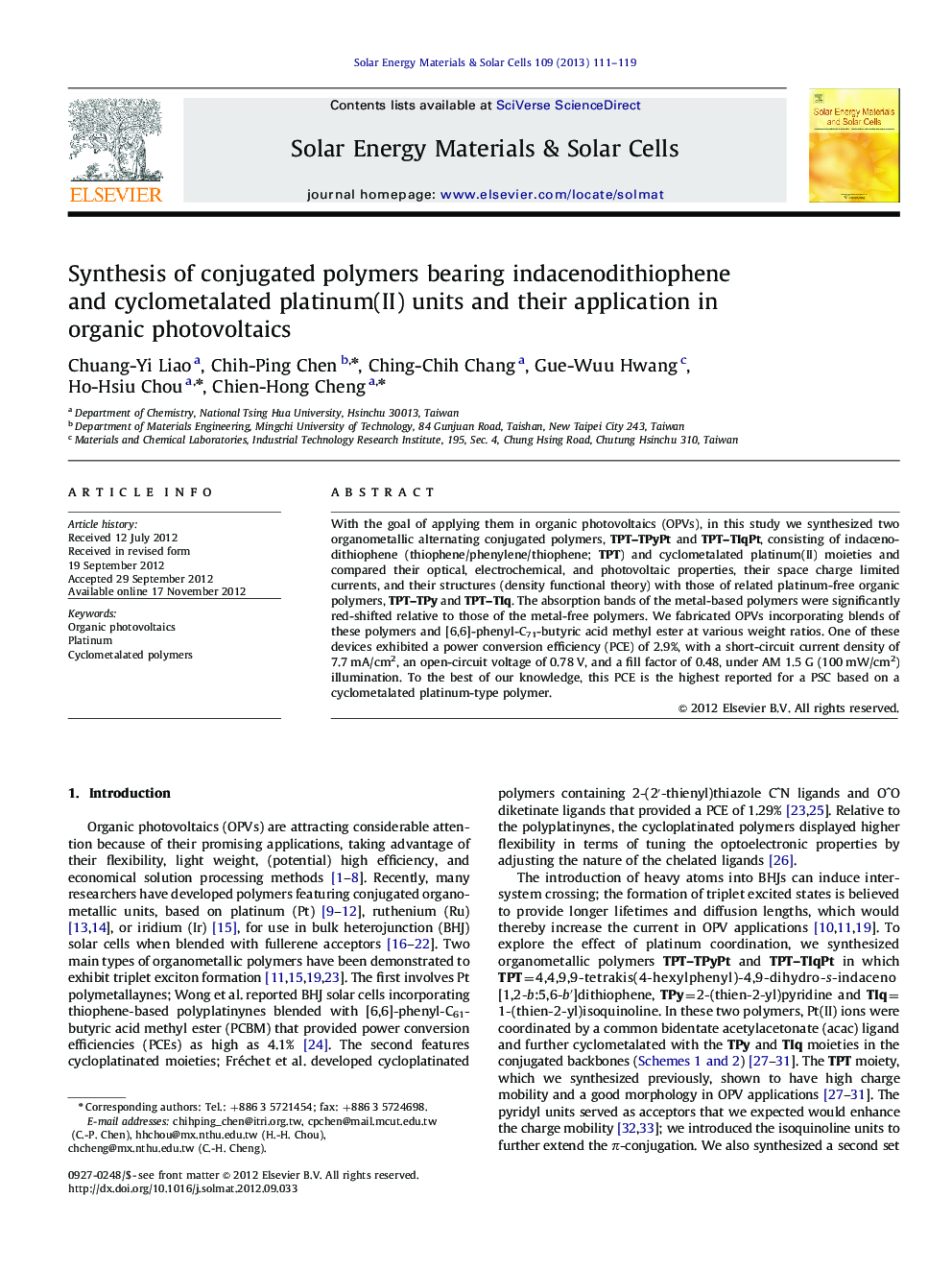| کد مقاله | کد نشریه | سال انتشار | مقاله انگلیسی | نسخه تمام متن |
|---|---|---|---|---|
| 78422 | 49331 | 2013 | 9 صفحه PDF | دانلود رایگان |

With the goal of applying them in organic photovoltaics (OPVs), in this study we synthesized two organometallic alternating conjugated polymers, TPT–TPyPt and TPT–TIqPt, consisting of indacenodithiophene (thiophene/phenylene/thiophene; TPT) and cyclometalated platinum(II) moieties and compared their optical, electrochemical, and photovoltaic properties, their space charge limited currents, and their structures (density functional theory) with those of related platinum-free organic polymers, TPT–TPy and TPT–TIq. The absorption bands of the metal-based polymers were significantly red-shifted relative to those of the metal-free polymers. We fabricated OPVs incorporating blends of these polymers and [6,6]-phenyl-C71-butyric acid methyl ester at various weight ratios. One of these devices exhibited a power conversion efficiency (PCE) of 2.9%, with a short-circuit current density of 7.7 mA/cm2, an open-circuit voltage of 0.78 V, and a fill factor of 0.48, under AM 1.5 G (100 mW/cm2) illumination. To the best of our knowledge, this PCE is the highest reported for a PSC based on a cyclometalated platinum-type polymer.
Graphical AbstractFrom a study of a series of Pt-containing and Pt-free polymers, an organic photovoltaic device has been developed exhibiting a power conversion efficiency of 2.9%, with a short-circuit current density of 7.7 mA/cm2, an open-circuit voltage of 0.78 V, and a fill factor of 0.48, under AM 1.5 G (100 mW/cm2) illumination.Figure optionsDownload as PowerPoint slideHighlights
► The organometallic alternating conjugated polymers have been synthesized.
► The optical, electrochemical, SCLC, and DFT calculation of these polymers are studied in detail.
► The absorption bands of Pt-based polymers show more redshifted than those of Pt-free polymers.
► A power conversion efficiency of 2.9% is obtained by using the blend of TPT–TPyPt/PCBM.
Journal: Solar Energy Materials and Solar Cells - Volume 109, February 2013, Pages 111–119